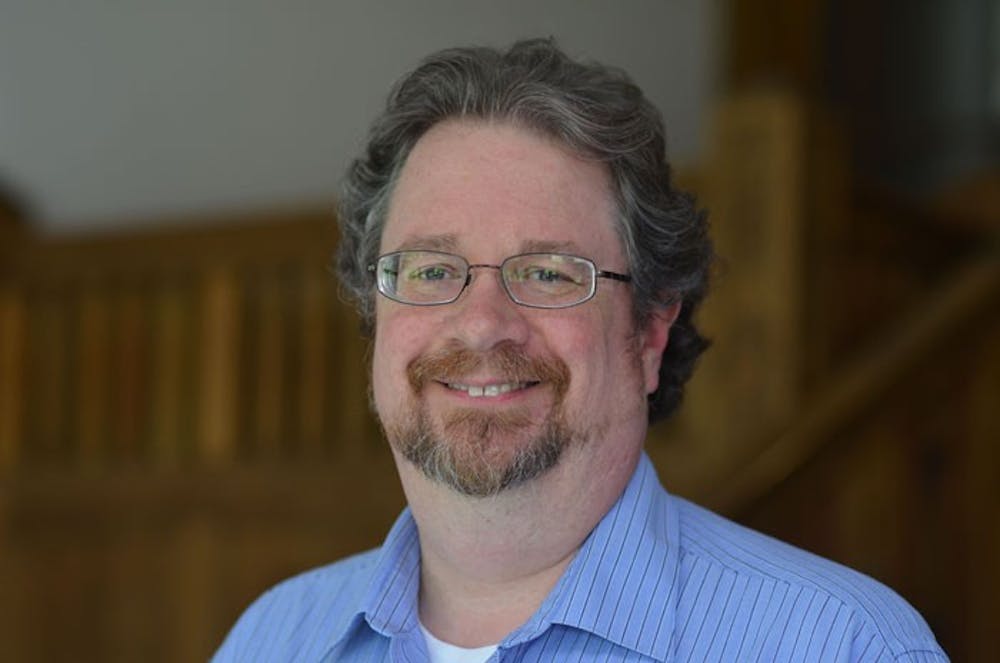Otterbein has enrolled — erm, hired — its new vice president for enrollment management.
Jefferson R. Blackburn-Smith, the senior associate director of undergraduate admission and first-year experience at Ohio State University, will start March 1 at Otterbein.
In an Otterbein press release, Blackburn-Smith said he is delighted to join the Otterbein community. “Everyone I met during my time on campus was open and welcoming and had a passionate belief in what Otterbein is and what it could be,” he said. “I look forward to working with Otterbein students, faculty and staff to help the university reach its goals.”
In the same press release, President Kathy Krendl said that Jefferson brings a compelling set of skills and experiences to Otterbein. “He is widely regarded as one of the most successful enrollment management experts in the country, and he has ties to schools and guidance counselors throughout the state of Ohio,” she said. “His leadership will be essential in helping us meet our strategic goals as an institution.”
At the Nov. 28 open Q&A forum in Roush, Blackburn-Smith said that based on a decrease in Ohio’s demographics, or its pool of potential college students, Otterbein needs to focus on bringing in students from different kinds of backgrounds than it normally does. One of the ways this could be done, he said, is through evaluating Otterbein’s financial aid strategies.
“It’s not just we need new recruitment strategies in order to be successful and bring these new populations, but we’re going to need to support students differently,” he said. “We’re going to need to … make sure that we’re able to support the students that we’re going to bring to campus.”
Blackburn-Smith has worked in the Office of Undergraduate Admissions and First Year Experience at OSU since 1995, starting as the senior associate director for strategy, outreach and recruitment in 2004. In this position, he has developed OSU’s long-term and annual undergraduate recruitment plans.
In his resume, Blackburn-Smith said he helped increase the number of applications to OSU by 74 percent as well as the average ACT score of the freshman class from 25.6 to 28. He also oversaw the development of recruitment techniques that pushed data to front-line recruiters.
In his cover letter, Blackburn-Smith said that recruiting a successful class at OSU requires strong partnerships with other campus offices. He also said that though OSU is a public university, it has followed a private-school model with its outreach and recruitment operations.
Before starting at OSU, Blackburn-Smith also served as the vice president of marketing at the Hayward Co., a central Ohio remodeling company, and the general sales manager at International Readers Service Bureau Inc., a magazine subscription agency. According to his resume, he has not been employed at any other college besides OSU.
He holds a master of arts in English from OSU.
The VPEM is the head of the Office of Enrollment. He or she is responsible not only for finding ways to bring in more high-quality students, but also for making current students want to stay. The more students at Otterbein who excel, the more funding the school can receive.
In a way, the VPEM is responsible for maintaining the good reputation of Otterbein after current students graduate, meaning the words “Otterbein University” on a resume continue to carry significant weight. If Otterbein continues to enroll strong students, it will maintain a good reputation.
The previous VPEM, Tom Stein, left Otterbein last April to work for Tusculum College in Tennessee in the same position. In March, Stein said he felt obligated to help Tusculum finish out the school year and that “it was just a good time” for him to start down there.
In addition to Stein’s departure, Cass Johnson, the director of admission at Otterbein since 1980, resigned after her husband, Craig Johnson, the former chair of music at Otterbein, accepted a position at North Park University in Chicago. She left Otterbein in early September and moved to Chicago with her husband.
Before Stein and Johnson left, an interim team of five people was assembled to oversee the Office of Enrollment Management until a new VPEM could be hired.
During the hiring process, Otterbein decided to keep the identities of the four potential candidates for VPEM confidential until one day before each person visited campus. The fourth candidate withdrew from candidacy for undisclosed reasons.
Paul Eisenstein, Otterbein’s dean of arts and sciences and the head of the VPEM search committee, said that because two of the three candidates would be returning to the institution they’re currently working for, maintaining their confidentiality was important.
Eisenstein also said that maintaining the candidates’ confidentiality until the visit day will “attract the best possible candidates.”
Otterbein was advised to keep the candidates confidential by Lahti Search Consultants, a firm that specializes in finding candidates for enrollment-related positions at colleges and universities.
Terry Lahti, the principal consultant at Lahti, said that many of the candidates they find for jobs are not currently looking for a job, but the search agency is trying to attract them to a new one.
“If candidates know it’s confidential, they can learn more about it without the risk of it being known on (their current) campus,” she said.
She said another reason the company encourages confidentiality is to give candidates enough time to tell their current employer on their own.
In previous years, the university did not choose to keep the candidates for high-level positions confidential. Eisenstein said he does not think this will set a precedent for future high-level hiring processes.
“In the world of enrollment management, highly qualified applicants are much, much sought after,” Eisenstein said. “This seems to me like a very case-specific instance of protecting anonymity.”








